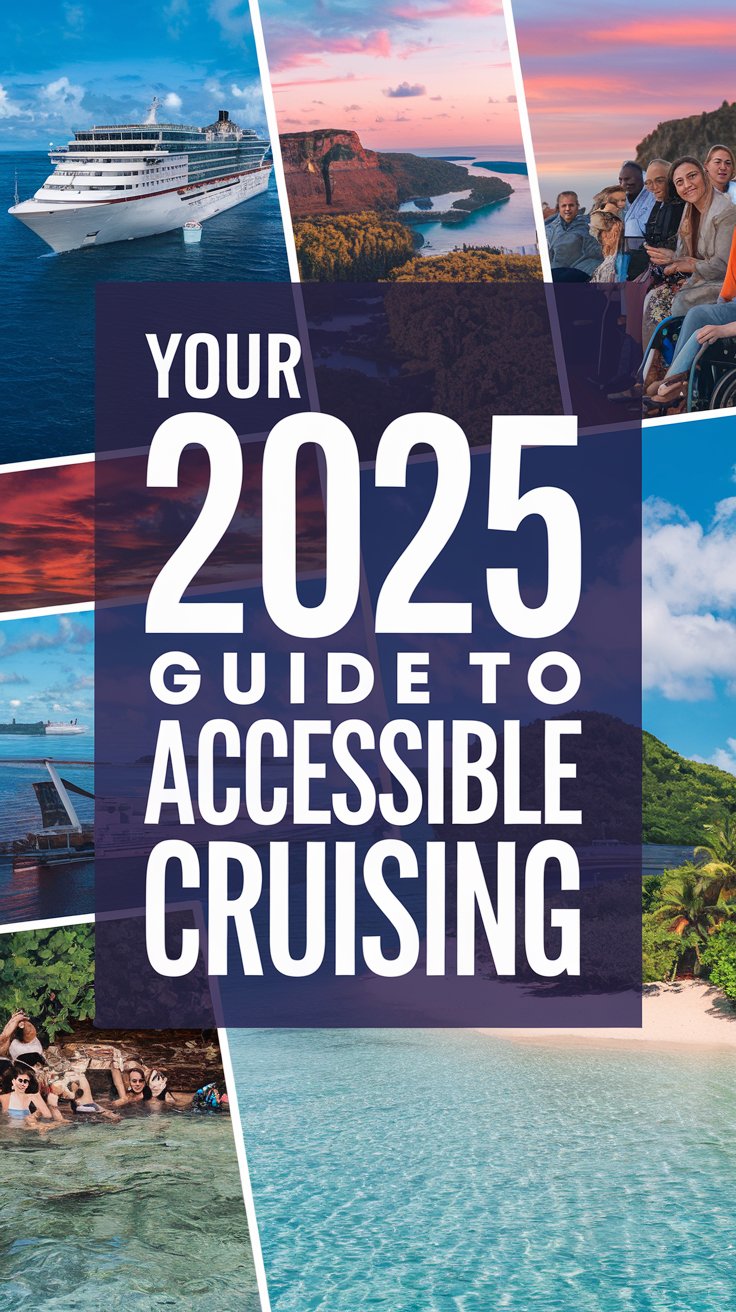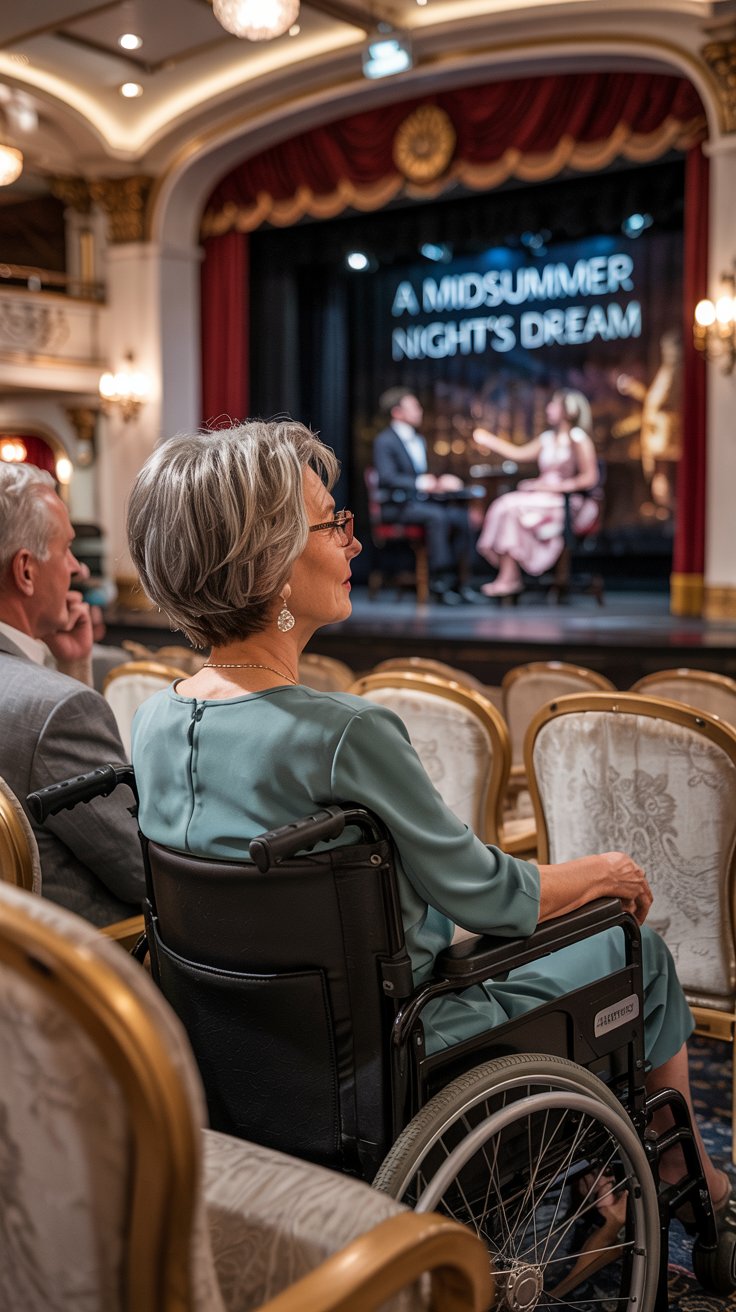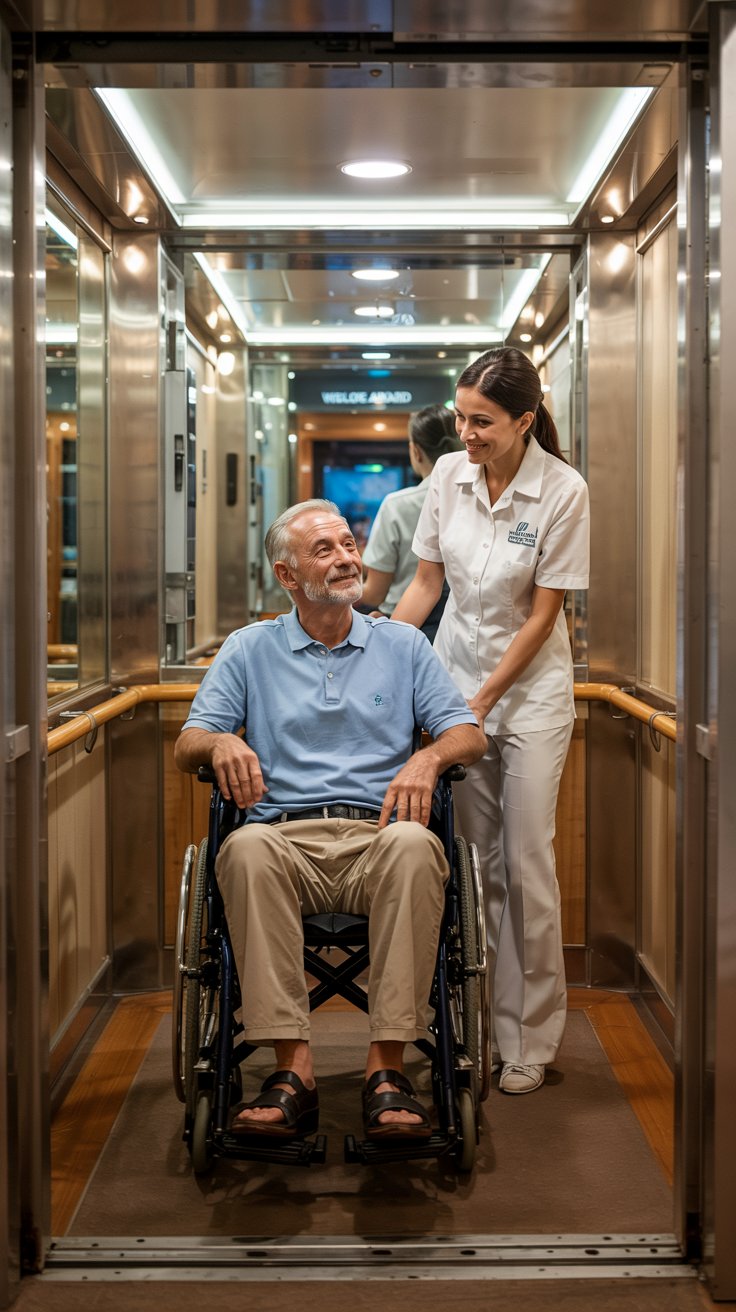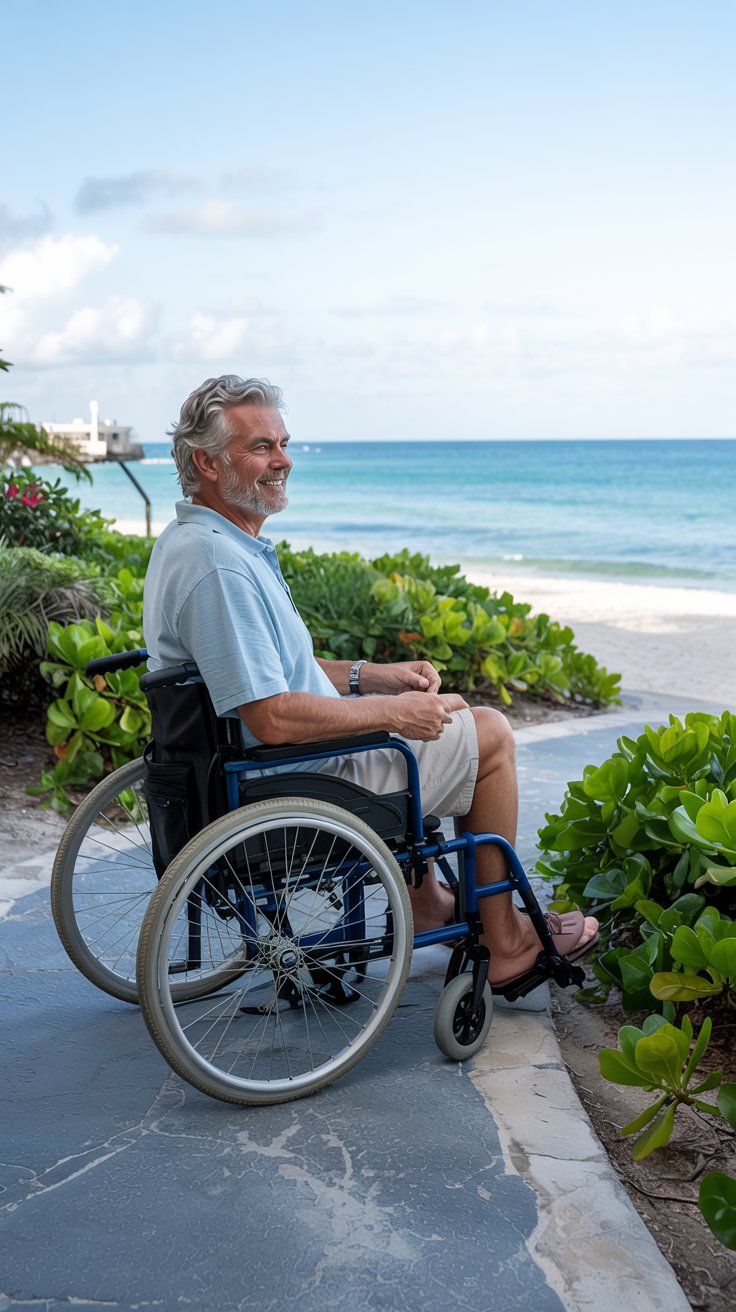
Cruising might just be the most disability-friendly vacation option out there right now. I’ve watched cruise lines transform their ships over the last decade, and the improvements for passengers with mobility, sensory, and cognitive disabilities have been nothing short of remarkable.
I put together this guide because I know how frustrating it can be trying to plan a vacation when accessibility information is scattered or outdated. Whether you’re a wheelchair user, have trouble walking long distances, are deaf or blind, or need other accommodations, I’ll walk you through what you need to know before booking your cruise.
Know Your Rights
If you’re sailing from or visiting U.S. ports, the Americans with Disabilities Act (ADA) has your back. This law requires cruise ships to provide equal access to their facilities and services. European cruises fall under the EU Passenger Rights Regulation, which guarantees assistance with boarding, disembarking, and getting around onboard.
Beyond these legal protections, many cruise lines now have dedicated accessibility teams that genuinely want to help. They offer priority boarding, accessible transportation options, and specialized customer support. The best part? Most staff members I’ve encountered seem genuinely invested in making sure everyone has a great time.
The New Generation of Accessible Ships (2020–2025)

The ships launched in the last five years blow older vessels out of the water when it comes to accessibility. Designers have finally started incorporating universal design principles from day one, rather than retrofitting as an afterthought.
Here’s my rundown of standout accessible ships:
| Ship | Accessible Features | Shore Support |
|---|---|---|
| Carnival Mardi Gras | 80 accessible cabins with wider doorways, wheelchair seating throughout, amazing pool lifts | They’ll provide beach wheelchairs at their private island—no need to bring your own |
| Royal Caribbean Wonder of the Seas | 44 accessible staterooms with roll-in showers, the game-changing Magic Carpet platform for tender access | They dock at piers whenever possible to avoid tender transfers |
| Celebrity Beyond | Those Infinite Veranda accessible cabins are worth every penny, hearing loops in theaters work flawlessly | Their Magic Carpet makes tendering less stressful than on other lines |
| Disney Wish | 35 superbly designed accessible rooms, specialized cabins for deaf travelers | Castaway Cay has paved paths and beach wheelchairs readily available |
| P&O Arvia | Over 50 accessible rooms, working pool hoists (unlike some lines where they’re “broken”), orientation tours for blind guests | Limited but growing selection of accessible shore excursions |
Finding the Right Stateroom
Accessible staterooms vary tremendously between ships, but the good ones typically include:
- Doorways wide enough for any wheelchair or scooter
- Truly roll-in showers (not just a tiny lip you have to bump over)
- Grab bars that are actually placed where you need them
- Toilets at a comfortable height with surrounding space for transfers
- Closet rails you can reach without standing
- Emergency call systems that actually work
I’ve found accessible rooms across all price points—inside cabins, balconies, and luxury suites. Just book early, as there might only be 30-40 accessible rooms on a ship carrying 5,000 passengers.

What You’ll Find Onboard
Getting Around
On newer ships, you’ll find thoughtfully designed accessible routes to all the places you want to go. Automatic doors actually stay open long enough, ramps aren’t impossibly steep, and elevators are plentiful (though still crowded at peak times).
Shows & Restaurants
Most theaters now include assistive listening systems that work with hearing aids. Several lines provide captioning or ASL interpreters if you request them at least 60 days before sailing. Restaurant staff are usually happy to help carry plates at the buffet or find you a table that accommodates your mobility device.
Tech & Support
The tech upgrades on newer ships make a world of difference:
- Braille signage that’s actually accurate and helpful
- Digital maps that show accessible routes
- Visual alert systems that really catch your attention
- TVs with reliable closed captioning
Many ships now have a dedicated accessibility coordinator who knows what they’re talking about, not just a customer service rep reading from a manual.
The Reality of Getting Ashore

Tender Ports: The Honest Truth
I won’t sugarcoat it—tendering (using small boats to reach ports) can still be a nightmare if you use a wheelchair or can’t navigate steps. Weather and sea conditions make a huge difference. Some newer ships like the Celebrity Beyond have vastly improved this process with their innovative platforms, but tender ports remain the biggest challenge for travelers with mobility disabilities.
Shore Excursions That Actually Work
Cruise lines have gotten better at marking which tours are wheelchair accessible, but their definition of “accessible” can be laughably optimistic. Your best bet is either booking through the cruise line and speaking directly with their shore excursion team, or finding a reputable local company that specializes in accessible tours.
Private Islands: The Accessibility Bright Spot
Cruise line private islands are often the most accessible stops on your itinerary. Royal Caribbean’s Perfect Day at CocoCay and Disney’s Castaway Cay have invested heavily in paved paths, beach wheelchairs, and accessible facilities. You can actually enjoy the beach without feeling like an afterthought.
Cruise Lines That Really Get It

After sailing on most major lines, here’s my unvarnished take on who does accessibility best:
- Royal Caribbean & Celebrity – They’re consistently ahead of the curve with innovative accessible design and helpful staff. Their newer ships are as good as it gets for wheelchair users.
- Princess – Not the flashiest ships, but they understand the needs of passengers with chronic conditions. Great for oxygen users and dialysis patients.
- Disney – Expensive but worth it for families, especially those with sensory processing challenges. Their attention to detail is unmatched.
- Holland America – Their slightly smaller ships and older demographic mean less crowding and more understanding of mobility issues.
- Norwegian – A solid mid-priced option with decent accessible cabins and improving shore options.
- Carnival – Budget-friendly with surprisingly good accessibility on their newer vessels.
Hard-Learned Tips for a Smoother Cruise
- Book directly with the cruise line or use a travel agent who specializes in accessible travel
- Fill out those special needs forms immediately after booking, then follow up by phone
- Research ports independently—don’t rely solely on cruise line information
- Request equipment like shower chairs early, and confirm again a week before sailing
- Join Facebook groups for cruisers with disabilities to get recent firsthand reports
The Bottom Line
Cruising has become one of the most hassle-free ways to travel with a disability. You unpack once, your accessible room remains consistent, and you can choose which ports to tackle and which to enjoy from the comfort of your balcony.
Are cruise ships perfect? Not by a long shot. But they’ve come light-years from where they were even five years ago. With the right ship and some careful planning, you can have that dream vacation without the accessibility nightmares that can come with land travel.
So go ahead and book that cruise. The sea is calling, and it’s calling all of us.
Need more detailed information? I’m working on a comprehensive accessible cruising guide for 2025 with ship-by-ship breakdowns and port accessibility ratings. Drop me a message for updates.
Last Updated: 19 April 2025
2 responses
I need assessable cruise ship information for cruises from uk round trip in 2027. Is there a price difference. I will only need a manual wheelchair. Hope to hear from you soon.
Hi Dawn
Can you please give me more information about which cruise from the uk you are on?